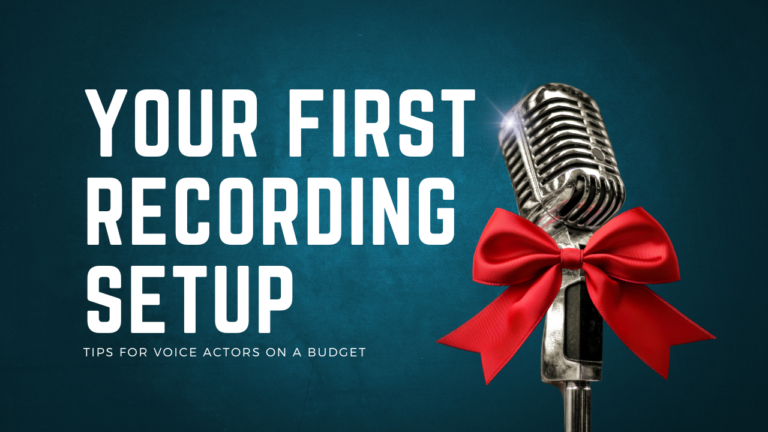Tech Tantrums
First up, let’s talk tech tantrums. Picture this: You’re in the booth, the director’s ready, the script’s a masterpiece waiting for your golden voice… and then, your DAW decides it’s the perfect moment for a digital nap. Oops! Want to see a grown person cry? Just fumble with your recording software like you’re trying to solve a Rubik’s Cube blindfolded.
To avoid being the reason a director develops trust issues with technology, get cozy with your gear. Learn your DAW inside out, practice recording punches, playback audio like a pro, and connect like you’re trying to reach them about their car’s extended warranty. Conferencing platforms like Zoom? Master them so well that you could teach the developers a thing or two. Remember, sending high-fidelity audio to your client should be as smooth as your voice after honey lemon tea.
The way to avoid this? Test, test, test. When you’re trying to connect to a client is not the time to figure out if your Zoom settings are correct or if you understand how to use a more complicated program like Source Connect. Make sure your router ports are open to allow high-fidelity audio to pass through the internet. Understanding the ways clients like to connect with talent is easy—there aren’t that many post-pandemic—and you need to become as familiar with them as possible, as soon as possible. If you’re a member of my academy, and you have access to my voice acting academy Facebook group, there’s no end to the number of people ready to help you test out your systems on a Saturday morning, or whenever, before you need to step in the booth with a client. Utilize your community and resources, and front-load all of your mistakes.

Money Matters
Next, let’s chat cheddar—and no, not the delicious kind. Discussing business during a session is about as welcome as a skunk at a garden party. Picture this: You’re mid-session, emotions are high, and suddenly, you decide it’s the perfect time to negotiate your rates or air your grievances. The director’s face? If looks could kill, you’d be voice acting for ghost stories exclusively.
To keep the peace, save the business talk for later. Have an issue? Schedule a chat offline. This isn’t just about keeping the director’s ego intact; it’s about professionalism. Plus, you’ll avoid the cringe-worthy silence that follows when you bring up something that half the room isn’t privy to. Trust me, it’s quieter than a mime’s sneeze.
The real secret to this? Make your communication with clients flawless before you get into the mix. Just like the previous tip, a pinch of preparation will save you a pound of trouble. Make sure your contracts are delivered before the session. Make sure when you accepted the job, you understood its scope. Make sure you understood your time in, time out, the length of the session, and what you’d be doing before you got into it. That way, you answer all the questions before you get started.
And if you can’t do that? If you get the contract thirty seconds before the session and get a lot of high-pressure sales tactics to sign it IMMEDIATELY? Then check out the blog post on 80/20 clients after this.

Diva Syndrome
Finally, let’s address the elephant in the recording booth: the dreaded diva syndrome. You know the type—refuses direction, asks questions like they’re cross-examining a witness, and has expectations in-line with a toxic rockstar.
To stay on the director’s good side, take direction like you’re absorbing wisdom from a sage. Ask questions, but make them insightful, poignant, and clear. Set clear expectations—are you detecting a pattern here about how to be a successful actor in any situation?—and remember, you’re part of a team, not the star of a one-person show. Be the actor who solves problems, not creates them.
Do you get bad direction sometimes? Sure. Can you sometimes be trapped in a room of 13 people all trying to justify their position at a company, and giving you 13 versions of the same script? Absolutely. But, if you followed my guidance in step 2 and understand when your session begins and ends, the client will know that you’re only going to have so much time to stumble around in the dark before you have to get the VO in the can and get paid. I had a situation lately where I was on the line with several clients at once, and each one of them was telling me to emphasize a different word in almost every sentence—which, as I am sure you know, means that essentially EVERY WORD WAS EMPHASIZED. The engineer eventually stepped in on my behalf, but until then I gave the client exactly what they wanted—even if I knew that it was precisely what they didn’t want.
So there you have it, folks! Follow these tips, and instead of becoming the bane of every director’s existence, you’ll be the breath of fresh air they desperately need. Now go forth, use your powers for good, and make some vocal magic happen. Until next time, keep your tech tight, your business backstage, and your diva in check. If you’re ready to dive into the next level of your voice acting career—or break in for the first time, check out my free eBook on how to get started without any experience. Go get behind the mic!




